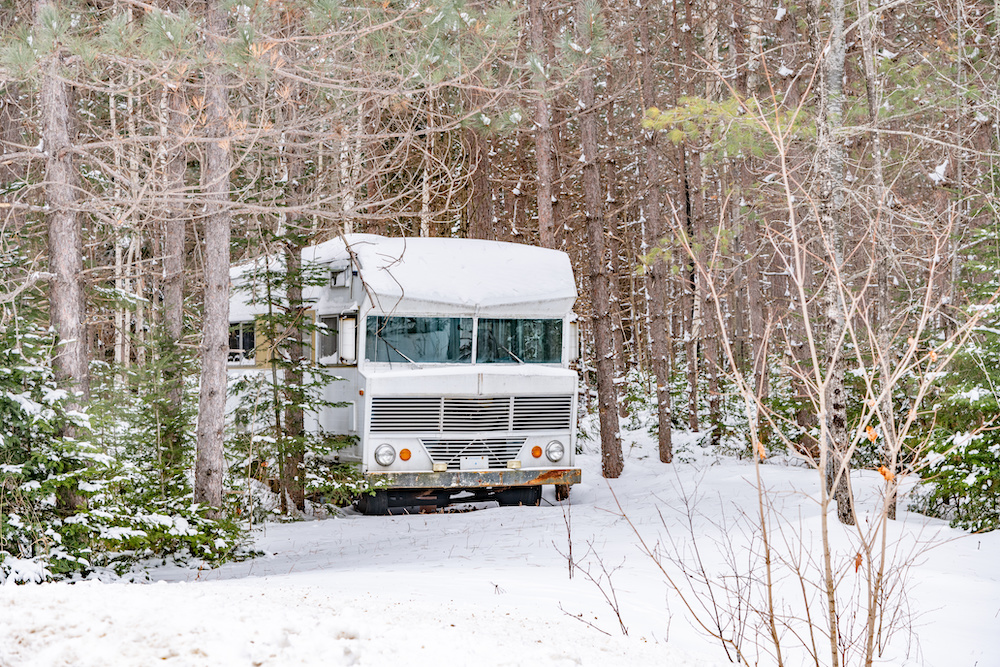A winter RV trip is one of the things that you would love to do.
It will be a unique experience, and you can enjoy the beauty of winter through your RV.
However, camping during the winter is not easy, and you have to prepare a lot of things to make sure that your RV is in the best condition to face the winter season.
One of the things that you should consider is to learn how to keep RV pipes from freezing while camping.
Yes, the RV pipes are susceptible to the cold, and once the pipes are frozen, the water from your water tanks would also be frozen.
We will give you a few simple tips on how you can guarantee that the pipes from your RV will not freeze, and you can continuously use the water without a hitch.
Contents
How to Keep RV Pipes From Freezing While Camping
Most people think that you need a customized vehicle or an RV made specifically for the winter season to enjoy camping, but the truth is that you do not need high-end components to survive in the cold.
All you need is to provide a layer of protection to the exposed water pipes in your RV, and you are good to go.
Here are some of the simple tips that you can follow.
1. Wrap the Exposed Water Lines
The most basic thing to do to make sure that the RV pipes will not freeze is to provide a layer of insulation to the water lines exposed outside.
You can use foam insulation if you still have room to wrap the pipes and a protective PVC shield that would keep the foam in place.
You can also get a water hose insulation.
You should look for something that will not need any DIY fixes as well as mounting brackets.
2. Use Heat Tape on the Pipes
You should buy heat tape before you go on a winter RV trip.
Then wrap the sewer hose and freshwater hose to make sure that the lines will always be warm while you are traveling.
You can use the heat tape around the values as well as the areas that are at risk of freezing.
3. Install a Tank Heater
When it is cold outside, putting some insulation will not be enough to make sure that the RV pipes will not freeze.
You need to install a tank heater below the water tank since it would guarantee that the pipes will stay warm while you are traveling.
You just need to use the self-adhesive backing to install it.
4. Allow Small Drips From the Faucets
It is a bit of a waste to allow small drips from your faucets, but this will help prevent the water and pipes from freezing.
Since the water will keep on moving, it will not freeze quickly.
5. Start Covering the Holding Tanks
The holding tanks should be covered since they need a layer of protection.
You can always use towels to cover the tanks and make sure that you use cotton since it is an excellent heat insulator.
The intertwined fibers from cotton towels will trap the air, so adding one or two stacks of towels can protect the RV from the cold.
6. Use Antifreeze
You should try adding some antifreeze on your holding tanks since it can provide additional protection to the valves.
7. Properly Dump Tanks
You should only dump tanks when they are still full, as it can help reduce the risk of freezing.
You should also make sure that you always close the waste valves when you are not using them.
How to Upgrade Your RV Insulation
While it is important to know how to keep RV pipes from freezing while camping and guarantee that your RV pipes won’t freeze, you should also make some adjustments to the overall insulation of your RV.
Remember that even if the pipes and tanks are protected from freezing, the water coming from them might freeze if the insulation of your RV is inferior.
It will also be very uncomfortable for you to go around various places if the inside of your RV is not properly insulated.
Here are a few simple tips to keep yourself warm while traveling in your RV.
1. Seal All the Windows and Doors
The first thing you need to do is check the caulking and seals on the windows of your RV.
Make sure you replace all of the areas that are too weak, or if something is missing.
For the doors, you can replace weather stripping on the exterior doors to make sure that the cold or moisture will not enter the RV.
2. Use Window Covering
If you are a bit tight on budget and you want to use a window covering, you can opt for a reflective foil or window fil since they are more affordable.
You can opt for foil-lined insulation and cut it to fit the RV windows.
This material has an additional feature, which would reflect the heat to the camper and make sure that the inside is warm and cozy.
3. Install Heavy Drapes
The use of thick fabric drapes can be a good way to block the cold around the windows.
If it is very chilly during night time, these heavy drapes can keep the air warm, and you can use them to separate the living space and the cockpit.
By doing this, you can target a smaller area to heat.
4. Insulate the Flooring of your RV
You have to insulate your flooring because the cold will also rise from the floor, especially during winter.
You can use foam board flooring for this.
If you don’t want to buy a foam board flooring, though, you can just use carpets or heavy rugs that would block the air from the floor.
5. Add RV Skirting
The wind coming from under the RV can cause your water tanks to freeze.
By adding RV skirting on the base of your RV, the cold wind can be blocked.
Some Important Tips Before Winter Camping
Now that you have an idea on how to insulate your RV and guarantee that the water pipes won’t be frozen once you set off, the next thing to do is to ensure that your vehicle can withstand the cold for a long time.
Here are a few simple tips that you should keep in mind.
1. Check Your Power Source
You need to make sure that you have enough power to run all the appliances when you are traveling.
You have to remember that you are using a lot of heating devices like heating pads and heating tank.
Thus, if you don’t have enough power, all these heating devices would take all of the power, and you won’t have enough for other comfort features.
2. Use All the Heating Devices You Can Install
You should not ignore interior heating and use all of the things that can heat the interior.
You have to know that all of the interior heating that you can install can help prevent the pipes from freezing.
3. Don’t Go out If the RV Is Not Fully Insulated
Don’t risk your life and go camping if your RV is not fully insulated.
You can test drive your RV around your area a few times and see if you can handle the cold.
If you think that the insulation is not enough, don’t go out yet.
Add more insulation to your RV and check all of the pipes.
Conclusion
If you are using a brand-new RV, the chances of frozen pipes are pretty low since the materials used for modern RVs and the plumbing systems are strong enough to handle the cold.
They won’t freeze easily even if you don’t put any extra insulation.
If your RV is already an old model, you have to spend a lot of time insulating the pipes.
Use our simple tips to make sure your winter camping will be fun and exciting.

